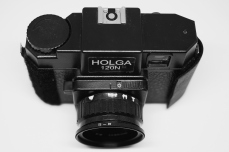In October last year (2016), I was lucky to have the opportunity to travel to Siem Reap, Cambodia for a week of volunteer charity work. My team and I were working with Volunteer Building Cambodia (VBC), who’s vision is perhaps best put in their own words:
Volunteer Building Cambodia is a locally run, community-driven NGO (non-government organisation), focussed on helping poor Cambodian families improve their living conditions.
Founded by local Khmer man, Sinn Meang in 2014, Volunteer Building Cambodia provides poor families in rural Siem Reap with housing, wells, water pumps and toilet facilities.
VBC builds solid houses for extremely poor families who lack the resources to build their own livable homes. We do thorough assessments to ensure those most in need receive our houses.
About 80 percent of Cambodians live in rural areas where a staggering 85 percent of people do not have access to adequate sanitation and 35 per cent cannot afford to access safe water. Where possible, we provide wells and toilets to improve living conditions.
Many families in rural Siem Reap still live on less than $1 a day.
We are looking at ways to break the poverty cycle and help these families to become self-sufficient and able to provide for themselves.
Check out their website here and Facebook page here.
In essence, we had one week to work alongside local builders and the village community to build a new home for a family of two children, a dog, a cat and a pig we nicknamed Percy.
The days were dirt and sweat-infused and I managed to smash a few delicate, keyboard-softened, fingers with hammers and nails. Yet, it was one of the most rewarding and memorable experiences of my life. Aside from that warm and fuzzy charitable feeling you get when you do something nice for someone else, just because, there is something primal about building something with your bare hands. We measured, sawed and hammered our little hearts out, the blood and sweat literal, not metaphorical. And when the last nail was nailed, the resulting sense of achievement was (and still remains) inspiring and palpable.
We had the opportunity to observe everyday village life, participating in ceremonies to bless the new home with Buddhist monks and village elder. We received a water blessing in which Monks, ethereally clad in crimson-orange robes, doused us with water whilst reciting mystical mantras. We got the chance to see a side of Cambodia off-limits to the umpteen thousandth temple hunter rolling through Siem Reap in a tourism-infused frenzy. The whole experience was enthralling and I can’t recommend it enough.
A word about our sponsors – Volunteer Building Cambodia. These guys are the real deal. The cause is just, the experience genuine and the organisation is run with a real sense of fun and compassion. The owner, Sinn, is a laugh a minute and has built an amazing NGO that I would thoroughly recommend to anyone looking to volunteer their time.
Here are a few pictures I took during the building experience. I wish I had taken more, but I was too busy with my hammer.


 Siem Reap is the home to Angkor Wat, a magnificent crowning jewel amidst a sprawling mass of temples and sculptures from the ancient world. In between my volunteering responsibilities, I made some time to marvel, explore and photograph the temples. Angkor Wat is one of the most photographed locations on the planet. Even I have photographed them before… This is where I should link to the photos I took on my first trip to the temples. Alas, I have been so lackadaisical with my blogging of late that I am yet to post them. I will soon, I promise. To give you an idea of the crowds the temples draw, however, here is one photo I took on my first trip – hoards waiting to take photos of Angkor Wat as the sun rises over its precipice.
Siem Reap is the home to Angkor Wat, a magnificent crowning jewel amidst a sprawling mass of temples and sculptures from the ancient world. In between my volunteering responsibilities, I made some time to marvel, explore and photograph the temples. Angkor Wat is one of the most photographed locations on the planet. Even I have photographed them before… This is where I should link to the photos I took on my first trip to the temples. Alas, I have been so lackadaisical with my blogging of late that I am yet to post them. I will soon, I promise. To give you an idea of the crowds the temples draw, however, here is one photo I took on my first trip – hoards waiting to take photos of Angkor Wat as the sun rises over its precipice.

With this in mind, I wanted to take some semi-original photos of the temples. Something a little different from the thousands already out there. The only question, was how? The answer came a few weeks before my trip, I was scrolling aimlessly through camera gear on eBay (a bad habit of mine) and stumbled across a Fuji XE2 which had been converted to infrared. This seemed an ideal way to make some original photos on my trip, a bit different from the status quo. I made sure to win the auction and packed my new camera along with the Fujinon 18mm F2 lens. The infrared spectrum renders foliage as mysterious, glowing whites, creating the distinct style in the photos I made. I hope you like them.






























































